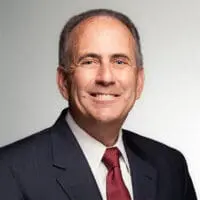Publication
Trump Issues Executive Order for Deregulation
President Donald J. Trump, in December 2017, discussed the number of regulations eliminated in his first Administration’s “far-reaching regulatory reform,” known as the “two-for-one rule.” Eleven months earlier, Trump had issued Executive Order (EO) 13771: Reducing Regulation and Controlling Regulatory Costs, instructing the Administration that “for every one new regulation, two old regulations must be eliminated.” By the year 2020, Trump recognized his Administration for “cutting regulations.”
That was then. But now, Trump has decided to eliminate even more regulations with the signing on January 31, 2025, of EO 14192: Unleashing Prosperity Through Deregulation. Instead of reinstating his two-for-one rule however, this EO implements a 10-to-1 deregulation initiative, with instructions to the Administration “that for each new regulation issued, at least 10 prior regulations be identified for elimination.” Additionally, this EO may be considered a deregulation initiative due to the broader scope of rules and regulations covered.
EO 13771 defined “rule” and “regulations” as meaning “an agency statement of general or particular applicability and future effect designed to implement, interpret, or prescribe law or policy or to describe the procedure or practice requirements of an agency.” Continuing this definition where it leaves off, EO 14192 stipulates that this is “including, without limitation, regulations, rules, memoranda, administrative orders, guidance documents, policy statements, and interagency agreements, regardless of whether the same were enacted through the processes in the Administrative Procedure Act.” However, just like EO 13771, not included under this definition are regulations regarding military, national security, or foreign affairs, nor related to agency organization, management, or personnel. Additionally, not included are regulations of any other category exempted by the Office of Management and Budget (OMB) Director.
This EO still goes further than EO 13771 in its requirement that “the total incremental cost of all new regulations, including repealed [ones]…shall be significantly less than zero;” whereas EO 13771 instructed that the total incremental cost “shall be no greater than zero.” Additionally, unlike EO 13771, this EO specifically instructs the OMB Director on how to implement this order, as well as to revoke the 2023 OMB Circular No. A-4 providing guidance on the development of regulatory analysis; and to reinstate the 2018 Memorandum of Agreement relating to the review of tax regulations under the 1993 EO 12866. Furthermore, Trump included a severability clause with this order so that if any provision or application thereof is deemed invalid, it does not make any other provision ineffective.
Under the two-for-one rule, it is reported that the first Trump Administration eliminated an average of five and a half regulations for every single new regulation issued. However, with the broader 10-to-1 deregulation initiative, the second Trump Administration may surpass the rule and regulation reductions similar to his first administration.
**Any opinions expressed are those of the authors and not the firm or their colleagues.
About Snell & Wilmer
Founded in 1938, Snell & Wilmer is a full-service business law firm with more than 500 attorneys practicing in 17 locations throughout the United States and in Mexico, including Los Angeles, Orange County, Palo Alto and San Diego, California; Phoenix and Tucson, Arizona; Denver, Colorado; Washington, D.C.; Boise, Idaho; Las Vegas and Reno-Tahoe, Nevada; Albuquerque, New Mexico; Portland, Oregon; Dallas, Texas; Salt Lake City, Utah; Seattle, Washington; and Los Cabos, Mexico. The firm represents clients ranging from large, publicly traded corporations to small businesses, individuals and entrepreneurs. For more information, visit swlaw.com.



